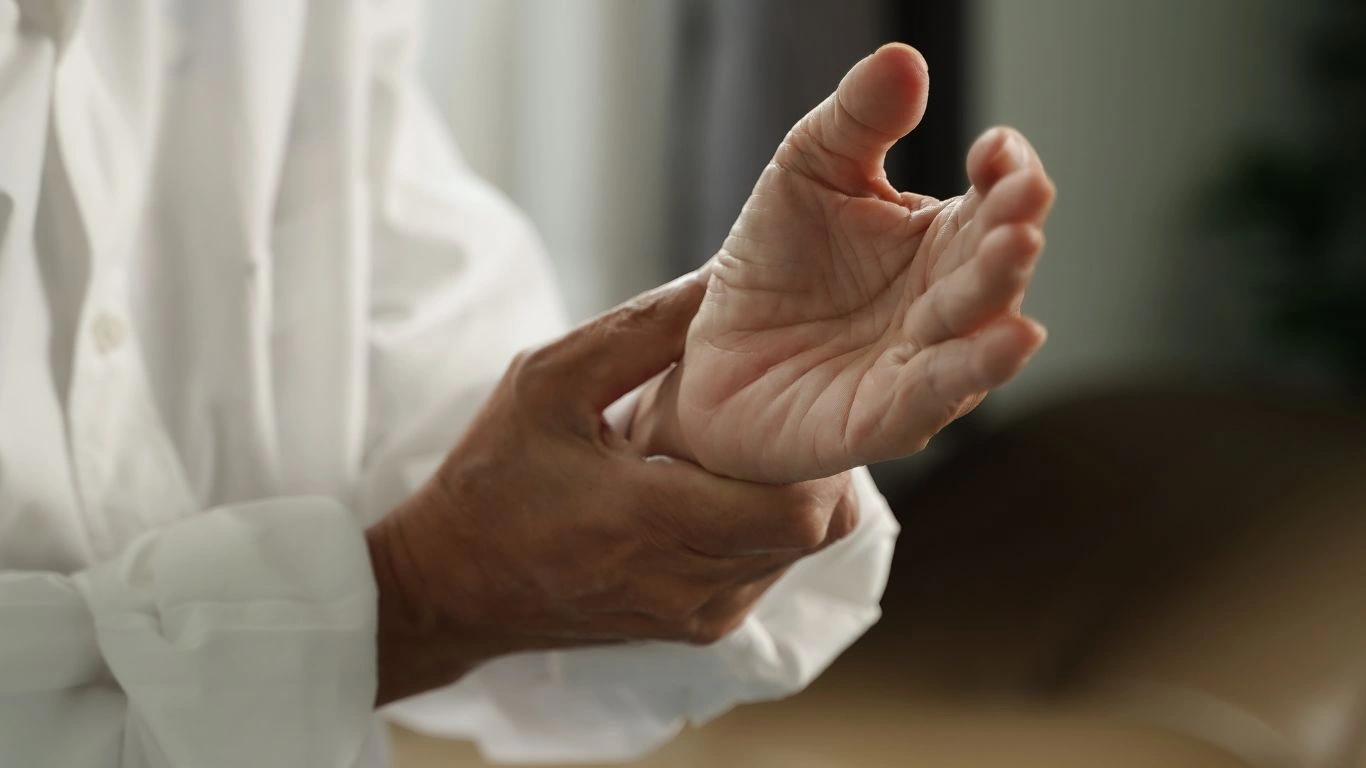Surprising Link Between Rheumatoid Arthritis and Dry Eyes
If you’ve ever struggled with rheumatoid arthritis and the connection to dry eyes, trust me—you’re not imagining things. I see this combination more often than you’d think in my rheumatology practice. Patients come in expecting to talk about joint pain, and the next thing you know, we’re knee-deep in a conversation about gritty eyes, blurred vision, and the constant need for eye drops. It’s not just annoying—it can actually impact your quality of life more than most folks realize.
Why Are My Eyes So Dry? It Might Be More Than Just the Weather

One of the first things I always explain to patients is that rheumatoid arthritis (RA) is not just a joint disease. It’s an autoimmune condition that can cause inflammation all over the body—including your eyes. And yes, dry eyes are one of the most common complaints we hear that aren’t directly joint-related. In fact, some studies estimate that up to 30% of people with RA also deal with dry eye symptoms.
When I was just starting out as a nurse practitioner, I had a patient—let’s call her Diane—who came in for her routine RA follow-up. She looked uncomfortable, blinking a lot, and constantly rubbing her eyes. At first, I thought it was just allergies. But it turned out she had something called keratoconjunctivitis sicca—a fancy term for chronic dry eyes. That case really stuck with me because it showed how easily these symptoms can be overlooked or brushed off.
What’s Actually Causing the Dryness?
There are a few key culprits behind the link between rheumatoid arthritis and dry eyes:
- Autoimmune attack: RA causes your immune system to mistakenly target healthy tissues, including the tear glands. This reduces tear production.
- Inflammation: Systemic inflammation in RA doesn’t stop at your joints—it can affect your lacrimal glands (those little guys that produce tears).
- Medications: Methotrexate, hydroxychloroquine, and other RA meds can sometimes contribute to dryness, even if they’re essential for controlling the disease.
These factors can combine into what we call secondary Sjögren’s syndrome—a condition often found in folks with RA that further reduces tear and saliva production. If you’ve noticed you’re constantly reaching for eye drops or feel like there’s sand in your eyes, this might be worth bringing up at your next appointment.
The Symptoms You Shouldn’t Ignore

It’s easy to downplay dry eyes as “just a little discomfort,” but let me tell you—it can become a big problem if left untreated. Here’s a quick checklist of symptoms I often ask about during my consultations:
- Burning or stinging sensations
- Redness or inflammation around the eyes
- Feeling like something is stuck in your eye (even when it’s not)
- Watery eyes (yes, dry eyes can weirdly make your eyes water more!)
- Light sensitivity
- Blurry vision, especially at the end of the day
Some of my patients assume these are just signs of getting older or staring at screens too much—and while that can certainly play a part, RA-related eye dryness has deeper roots. I’ve had patients tell me their vision seemed “off” or that they couldn’t wear contacts anymore without discomfort. These are red flags.
When to See a Specialist
If you’re nodding along to these symptoms, it might be time to loop in an ophthalmologist—preferably one who’s familiar with autoimmune conditions. As part of your care team, they can help with special tests to check your tear production, eye surface health, and inflammation levels. I often collaborate with eye doctors to tweak treatment plans based on what’s going on in both the joints and the eyes. It’s all connected.
Real Talk: Daily Life with Dry Eyes and RA

Living with RA is already a juggling act, and adding dry eyes to the mix can be downright frustrating. From my own experience working with patients, I’ve learned that even small changes—like using a humidifier or wearing wraparound sunglasses outdoors—can make a surprisingly big difference.
I had a patient who kept a mini bottle of preservative-free eye drops in every bag, jacket pocket, and car cupholder. It sounds like overkill until you realize just how often dry eyes can hijack your day. And don’t even get me started on trying to read, work on a computer, or drive at night with blurry, burning eyes.
How I Help My Patients Tackle Dry Eye Symptoms Without Losing Their Minds

Over the years, I’ve seen firsthand how frustrating it can be to deal with rheumatoid arthritis and the connection to dry eyes. It’s not just the symptoms—it’s the way they sneak into everyday life and make the simplest tasks feel more complicated. That’s why I always aim for practical, easy-to-follow strategies when helping my patients manage both conditions at once.
First things first: the basics matter. You don’t need a shelf full of expensive products. In fact, here’s what I usually recommend for anyone just starting to manage dry eye symptoms related to RA:
- Use preservative-free artificial tears: These are gentler on already-irritated eyes. I suggest starting with 4x a day and adjusting as needed.
- Warm compresses: A microwavable eye mask can do wonders for opening up clogged oil glands in your eyelids.
- Stay hydrated: Seems simple, but many people with autoimmune conditions underestimate how much hydration impacts tear production.
- Humidifiers: Especially helpful during colder months when indoor air gets super dry.
One of my patients, Joe, swears by his little desk humidifier and calls it his “eye spa.” Hey, whatever works, right?
When Lifestyle Adjustments Aren’t Enough

Of course, sometimes those over-the-counter fixes just don’t cut it—especially when your dry eyes are linked to underlying autoimmune inflammation. That’s where prescription treatments come into play. And yes, I’ve had to go this route for more than a few patients (and they were glad they did).
Top Prescription Options for RA-Related Dry Eye
Let me break down the most common go-tos:
- Cyclosporine eye drops (Restasis or Cequa): These reduce inflammation in the tear glands to help them produce more tears over time.
- Lifitegrast (Xiidra): A bit newer, but also aimed at calming inflammation. Some of my patients like this better because it works a little faster.
- Autologous serum eye drops: This one sounds wild, but it uses your own blood serum to create custom eye drops. It’s usually reserved for severe cases, but it’s incredibly effective.
I remember one patient, Maria, who’d tried every drop on the market with no relief. Once we got her on Restasis and coordinated with her ophthalmologist, her eye comfort improved dramatically within a couple of months. She actually cried at one appointment—not from pain, but relief. That moment stuck with me.
Don’t Forget: Eye Health Is Part of Your RA Plan

Here’s something I always try to drive home: your eyes are not separate from your RA. They’re part of the big picture. And that means they deserve a spot in your treatment plan. I always encourage my patients to speak up about eye discomfort during rheumatology visits—even if it feels minor.
Let’s be honest, when you’re juggling fatigue, joint pain, lab work, and medication side effects, eye issues can feel like the least urgent problem on your list. But dry eyes can signal that inflammation is active in more places than just your knees or hands. It’s not just a comfort issue—it’s a clue.
Collaborative Care Makes a Big Difference
I can’t stress this enough: managing RA with eye involvement takes a team. Rheumatologist, ophthalmologist, primary care provider—we all play a role. In my clinic, I’ve built strong relationships with local eye specialists who know autoimmune diseases inside and out. That way, if I see signs of trouble, my patients don’t have to start from scratch finding someone who gets it.
And if you’re reading this and thinking, “My doctor never asked about my eyes,”—bring it up. Mention your symptoms. Be your own advocate. You know your body better than anyone else.
Everyday Adjustments That Actually Work
Some final little tips that patients have shared with me over the years that can really make a difference:
- Blue light filters on screens: Less eye strain = less aggravation.
- Omega-3 supplements: These may help reduce inflammation and improve tear quality
Small Changes That Support Eye Comfort Long-Term

One of the things I’ve learned in my years as a rheumatology nurse practitioner is that the little stuff adds up. When you’re dealing with rheumatoid arthritis and the connection to dry eyes, consistency really is your best friend. Whether it’s daily eye drops, routine screen breaks, or tweaking your home environment, these small changes can be the difference between “getting by” and actually feeling comfortable in your own body.
Here are a few more day-to-day tweaks I often recommend, especially for patients juggling both joint pain and eye discomfort:
- Adjust your screen time: Use the 20-20-20 rule—every 20 minutes, look at something 20 feet away for 20 seconds. Sounds simple, but it works.
- Wear wraparound glasses outside: These shield your eyes from wind, allergens, and UV exposure—all of which can dry them out even more.
- Limit caffeine and alcohol: Both can contribute to dehydration, which often makes dry eyes worse. Hydration is key!
- Anti-inflammatory diet: I’ve seen real improvements when patients cut down on processed foods and include more omega-3s, leafy greens, and whole grains.
One patient of mine even went as far as rearranging their workspace to face away from ceiling vents after realizing the airflow was drying out their eyes. It’s amazing how the right environment can make such a difference when your tear glands are already under siege.
RA Flare-Ups and Eye Flares Often Go Hand in Hand

Here’s something that doesn’t get talked about enough: when your joints flare up, your eyes often do too. The same underlying inflammation that causes pain in your knees or fingers can light up the tissues around your eyes. This is especially true if you’ve been diagnosed with secondary Sjögren’s syndrome, which commonly overlaps with RA.
I’ve had patients tell me their eyes felt extra gritty or painful during an RA flare, even before joint symptoms fully kicked in. It’s like the body’s early warning system. And if you’re someone who experiences this pattern, tracking your symptoms can help guide your treatment approach—both from a rheumatology and ophthalmology perspective.
Tracking Symptoms Can Make All the Difference
If you’re not already keeping a journal (or using an app) to track symptoms, I highly recommend it. Here’s what I usually tell folks to jot down regularly:
- Dry eye symptoms (severity, triggers, and time of day)
- RA flare signs (fatigue, stiffness, swelling)
- Medications taken and any recent changes
- Environmental factors (weather, screen use, diet)
It doesn’t have to be fancy—just a few notes each day. This info can be a goldmine when we’re trying to piece together what’s helping (or not) and adjust your care plan accordingly.
When It’s Time to Push for More Answers
Sometimes, even after all the eye drops, dietary tweaks, and lifestyle changes, symptoms persist. That’s when we have to dig deeper. If you’ve been trying to manage dry eyes on your own and things still feel “off,” don’t settle for being uncomfortable. Speak up. Ask for referrals. Push for labs and tear production tests if needed.
As a provider, my role isn’t just about prescriptions—it’s about advocacy. And I always tell my patients: you deserve to feel heard, respected, and taken seriously. Just because dry eyes aren’t life-threatening doesn’t mean they aren’t life-altering. They can absolutely impact how you show up at work, engage with family, or just enjoy a quiet afternoon reading a book.
Questions to Ask Your Provider
Need a starting point for that next appointment? Here are a few questions that can help open the conversation:
- Could my eye symptoms be related to my rheumatoid arthritis?
- Is there a chance I have secondary Sjögren’s syndrome?
- Should I see a specialist for further evaluation?
- Are any of my current medications possibly making this worse?
- What advanced treatments are available beyond over-the-counter drops?
Don’t worry if you forget any of these—write them down and bring them with you. I love when patients come in prepared because it tells me they’re invested in their health. That kind of engagement helps us deliver better, more personalized care.
References
- American Academy of Ophthalmology
- American College of Rheumatology
- Sjögren’s Foundation
- National Library of Medicine
Disclaimer
This article is intended for informational purposes only and should not be considered a substitute for professional medical advice, diagnosis, or treatment. Always consult your healthcare provider for personalized guidance and care.

Tarra Nugroho is a dedicated Nurse Practitioner with a strong foundation in family and preventive care. She brings both compassion and clinical expertise to her practice, focusing on patient-centered care and health education. As a contributor to Healthusias.com, Tarra translates medical knowledge into clear, empowering articles on topics like women’s health, chronic disease management, and lifestyle medicine. Her mission is simple: help people feel seen, heard, and informed—both in the clinic and through the content she creates. When she’s not caring for patients, Tarra enjoys weekend hikes, plant-based cooking, and curling up with a good health podcast.









